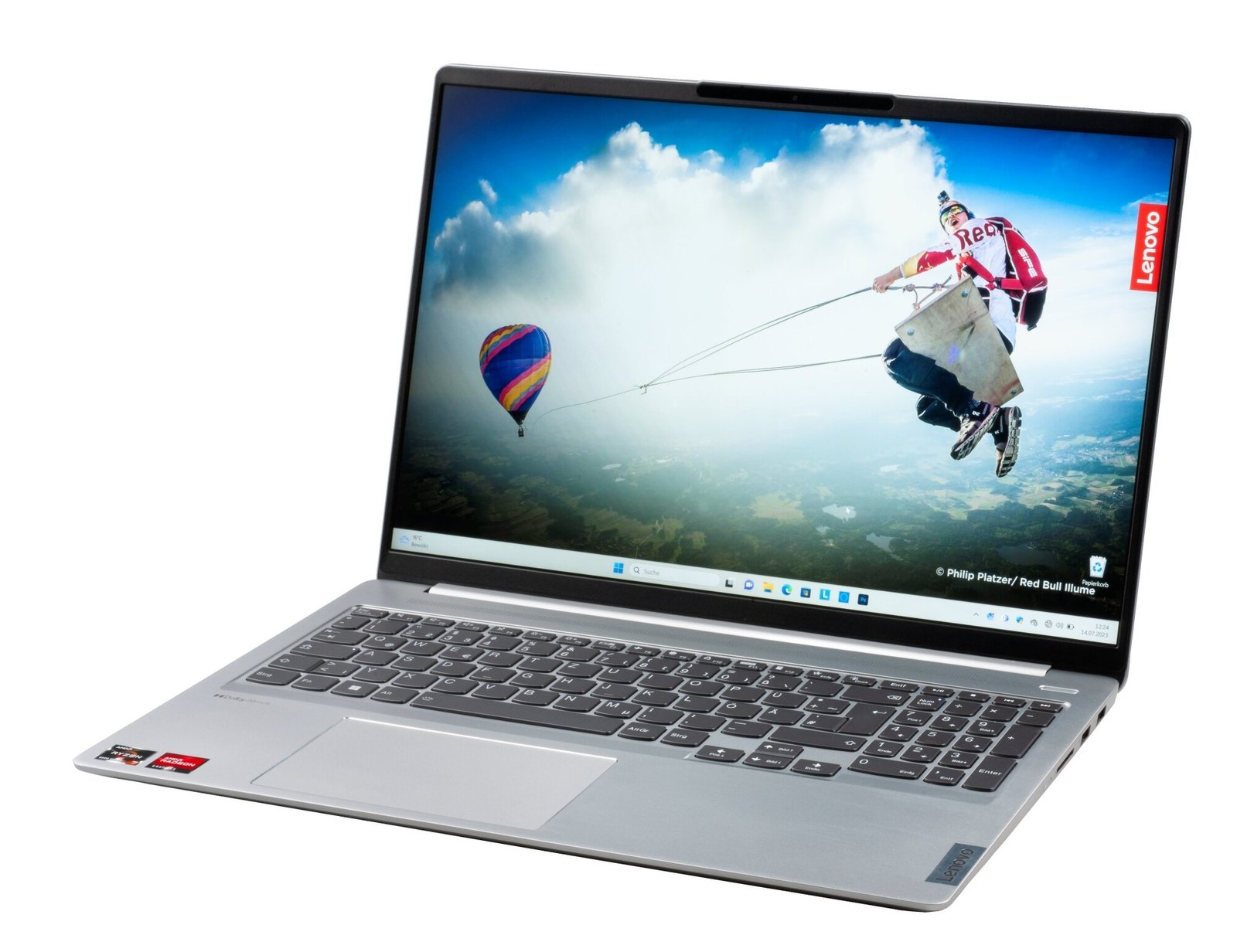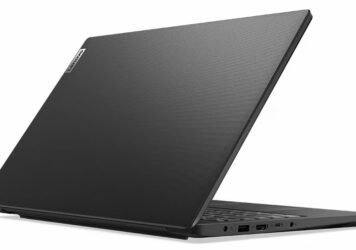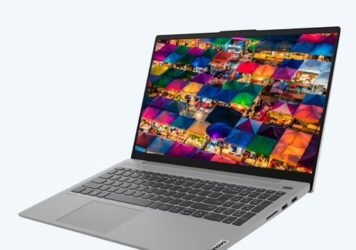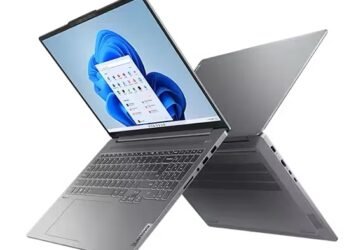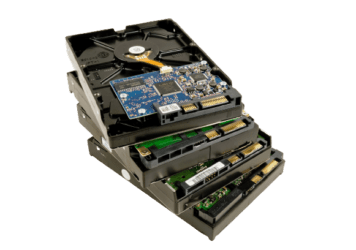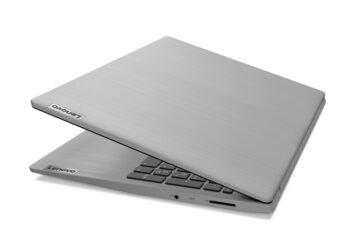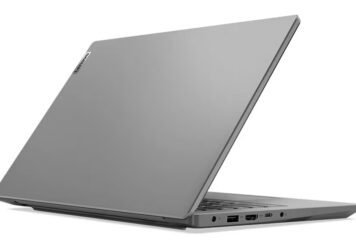Lenovo Care Patna
Lenovo Care Patna
Operating systems and applications should be up-to-date, crucial for a better user experience, as it enhances security, performance, and stability. This proactive approach safeguards your system from potential vulnerabilities and ensures optimal performance.
The significance of software updates cannot be overemphasized, as they serve various critical functions:
-
Security Enhancements: Keeping your software up-to-date is crucial. This includes installing the latest security patches, which protect against cyber threats and fix known vulnerabilities. Hackers constantly look for weaknesses in software, and updates help fortify your system’s defenses.
-
Bug Fixes: Updates also address software bugs and glitches that can impact the performance and stability of your laptop. Resolving these issues improves the user experience and decreases the likelihood of errors or failures.
-
Performance Improvements: Frequently occurring software updates offer performance enhancements, allowing your laptop to function faster and more efficiently. These improvements enhance overall productivity and responsiveness.
-
Compatibility with New Technologies: As technology advances, updates ensure that your laptop remains compatible with the latest hardware and software developments. This compatibility provides seamless integration and optimal functionality.
-
Feature Enhancements: Updates often introduce new features and functionalities, expanding the capabilities of your laptop. These additions can enhance your user experience and open new possibilities for creativity and productivity.
-
Compliance and Regulations: Enterprises and organizations must update their software to follow industry regulations and meet compliance requirements. Failure may result in security breaches and legal repercussions.
-
Vendor Support: You can maintain access to vendor support and assistance by updating your software. Running outdated software may limit your ability to receive help when encountering issues.
Software updates are essential for maintaining your laptop’s security, stability, and performance. Maintaining the most recent updates ensures your laptop remains secure, efficient, and bestowed with the latest innovations and functions. It is an essential practice for any user who values the reliability and longevity of their device.
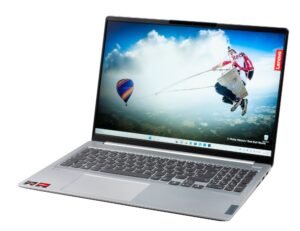
1.2 Managing Software Updates on Laptops
Laptops come equipped with integrated mechanisms that make managing software updates more efficient. Operating systems like Windows, macOS, and Linux typically offer automatic update settings, empowering users to schedule regular update checks and automatic installations. This feature ensures that the latest software versions are obtained without manual intervention.
For third-party applications, consider using a centralized software update tool. These tools can scan your laptop for outdated software and retrieve the latest versions from official sources. Tools simplify the update process, actively ensuring that all installed applications are up-to-date and significantly enhancing overall system security and performance.

1.3 Scheduled Maintenance and Optimization
Scheduled maintenance is essential to keep your laptop running smoothly. Perform routine tasks like disk cleanup to remove temporary files and unnecessary data accumulating over time. Regularly defragment your hard drive (for traditional HDDs) or optimize your solid-state drive (SSD) to improve file access speeds and extend the lifespan of your storage.
Additionally, use system optimization tools to manage startup programs, clear browser caches, and free up memory. These measures help maintain system responsiveness and efficiency, allowing you to work efficiently.
Troubleshooting Software Issues
Despite regular updates and maintenance, occasional software issues may arise. To troubleshoot these problems effectively:
-
Identify Error Messages: Pay attention to any error messages displayed on your laptop. Understanding error codes or messages can help pinpoint the root cause of the issue.
-
Check Event Logs: Reviewing the system’s event logs can provide valuable insights into software-related problems, including crashes or errors. Event Viewer on Windows and Console on macOS are valuable tools for this purpose.
-
Rollback Updates: If a recent update causes problems, consider returning to a previous system restore point or uninstalling the problematic update to regain stability.
-
Use Safe Mode: Booting your laptop in Safe Mode can help determine if third-party applications are causing issues. If the problem disappears in Safe Mode, it might indicate a compatibility problem with an installed application.
-
Reinstall Software: If a program exhibits persistent issues, try reinstalling it. Reinstalling software can resolve problems caused by corrupted files or configurations.
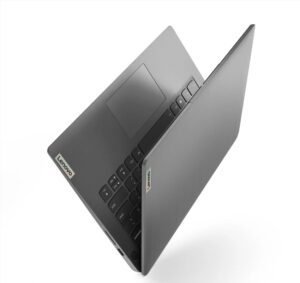
Maintaining your laptop through regular software updates and scheduled maintenance ensures smooth performance and reliability. Embrace automatic and centralized software updates to keep your operating system and applications effortlessly up-to-date. Perform routine maintenance tasks to optimize your system’s performance and extend lifespan. When troubleshooting software issues, identify error messages systematically, check event logs, and consider rollback or reinstallation options. By adopting these practices, you can keep your laptop in peak condition, providing a seamless and efficient computing experience.
Security Considerations for Laptop Software
2.1 Best Practices for Laptop Software Security
Implementing robust laptop software security is crucial to protect sensitive data and maintain a secure computing environment. Here are some recommended practices:
-
Regular Software Updates: Maintain an up-to-date laptop operating system, applications, and security software to fix existing flaws and defend against emerging threats.
-
Strong Passwords: Use complex and unique passwords for your laptop, applications, and online accounts. Using a password/passcode manager to generate and manage strong passwords has proven beneficial.
-
Enable Firewall: Activate the laptop’s built-in firewall to regulate incoming and outgoing network traffic and provide additional protection against unauthorized access.
-
User Account Control (UAC): Enable UAC on Windows or comparable features on other operating systems to prompt for authorization before making system modifications or installing software.
-
Disable Unnecessary Services: Turn off any unnecessary network services and features that might create potential entry points for attackers.
2.2 Protection Against Laptop Malware and Viruses
Use the steps outlined below to stop viruses and malware from invading your laptop:
-
Antivirus Software: Installing antivirus software with real-time tracking and routine updating is advised. Perform regular system scans to detect and eliminate potential threats.
-
Safe Browsing Habits: Exercise caution when browsing the Internet. Refrain from clicking on dubious links, downloading files from untrusted sources, and stay vigilant against phishing attempts.
-
Email Security: Exercise caution with email attachments and links. Be skeptical of unexpected emails and verify the sender’s authenticity before clicking links or downloading attachments.
-
Malware Removal: In case of infection, use specialized laptop malware removal tools to eradicate malicious software effectively.
2.3 Data Encryption and Privacy Measures
Protecting your data and privacy is crucial, particularly when your laptop holds sensitive information. Consider the following measures:
-
Full Disk Encryption: Encryption of the data in your hard drive is necessary for theft or unauthorized access. Windows with BitLocker and macOS with FileVault provide this encryption facility.
-
Secure Network Connections: Protected Network Connections: WPA2 and WPA3 are some of the secure Wi-Fi connections with encryption to prevent tracking of your data, especially during transmission.
-
VPN Usage: Use a reliable Virtual Private Network (VPN) to track your internet traffic and safeguard your data while using public Wi-Fi or unknown networks.
-
Privacy Settings: Customize privacy settings in your applications and operating systems to restrict unnecessary data sharing and minimize the chances of data breaches.
In summary, ensuring laptop software security is paramount in the ever-changing landscape of cyber threats. By following best practices, such as maintaining regular software updates, using strong passwords, and activating security features like firewalls and UAC, users can strengthen their laptop’s protection against potential attacks. Additionally, implementing reliable antivirus software and adopting safe browsing habits reinforce security against malware and viruses. Additionally, implementing data encryption and privacy measures like full disk encryption and VPN usage helps safeguard sensitive information and maintain user privacy. By adopting these security considerations, users can enjoy a safer and more secure computing experience on their laptops.
Emerging Trends in Laptop Software
3.1 Cloud-Based Software and Services
Cloud-based software and services represent a paradigm shift in computing, offering users various benefits and transforming how applications are developed, deployed, and utilized. Cloud-based software leverages remote servers and networks instead of relying solely on local resources, making it accessible through the Internet.
Critical Aspects of Cloud-Based Software and Services:
-
Cloud-based software: Enables accessing applications and data from any internet-connected device. This level of accessibility eliminates geographical limitations and facilitates smooth collaboration among users, irrespective of their location.
-
Scalability: Cloud services are highly scalable, allowing businesses and individuals to adjust their computing resources as per demand. This elasticity ensures that users can efficiently handle varying workloads and scale up or down as required without upfront hardware investments.
-
Cost Efficiency: Embracing cloud-based software eradicates the necessity for costly on-premises infrastructure. It offers a cost-effective solution for startups, small businesses, and enterprises alike, allowing users to pay only for the resources they utilize.
-
Data Security: Reputed cloud service providers invest heavily in security measures to safeguard user data. They implement encryption, access controls, and regular backups to protect against data breaches and ensure data integrity.
-
Automatic Updates: Cloud-based software providers take charge of updates and maintenance, ensuring users are consistently on the latest version without manual intervention. This practice reduces downtime and keeps applications secure and up-to-date.
-
Collaboration: Cloud-based services allow team members to actively collaborate in real time on files, documents, spreadsheets, and many other files. Cloud services enhance productivity and streamline workflows.
-
Disaster Recovery: Built-in cloud-based services are disaster recovery capabilities. Data stored in the cloud is redundantly backed up in multiple locations, preventing data loss due to hardware malfunctions or unforeseen circumstances.
Popular Cloud-Based Software and Services:
-
Cloud Storage
-
Software-as-a-Service (SaaS)
-
Infrastructure-as-a-Service (IaaS)
-
Platform-as-a-Service (PaaS)
3.2 Artificial Intelligence Integration
Artificial Intelligence (AI) integration represents a groundbreaking advancement in laptop software, empowering devices to learn, reason, and make informed decisions. By incorporating AI capabilities into various applications and operating systems, laptops become more intelligent, intuitive, and capable of delivering personalized experiences to users.
Important Factors to Consider When Integrating Artificial Intelligence:
-
Virtual assistants: Like Siri, Cortana, and Google Assistant are proficient in language processing and voice recognition, enabling them to effectively carry out various user tasks, from setting reminders to controlling smart home devices and responding to inquiries.
-
Predictive Text and Autocorrect: AI algorithms learn from user typing patterns to offer predictive text suggestions and autocorrect errors. This feature saves time, reduces typing mistakes, and improves overall typing efficiency.
-
Image and Speech Recognition: AI-driven image and speech recognition technologies allow laptops to interpret visual and auditory inputs. Applications include facial recognition for security, object identification, and voice commands for hands-free control.
-
Customization: AI algorithms examine the user’s behavior and preferences to provide tailored content and suggestions. From suggested articles and videos to product recommendations, this level of personalization enhances users’ experiences.
-
Natural Language Processing (NLP): AI-powered NLP enables laptops to understand and interpret human language. It facilitates language translation, sentiment analysis, and chatbot interactions, streamlining communication.
-
Machine Learning: Machine learning algorithms allow laptops to learn from data and improve their performance over time. Applications include email spam filters, fraud detection, and recommendation systems.
-
Sentiment Analysis: AI-driven sentiment analysis can help laptop Businesses gain valuable insight into customer sentiments by analyzing the emotional tone of written content, including social media posts and customer feedback.
Artificial Intelligence (AI) integration transforms laptop software by enhancing automation and personalization. AI algorithms power virtual assistants, chatbots, and recommendation systems, which improve user interactions and anticipate user needs. AI-powered features make laptops more intelligent and efficient, adapting to user preferences with predictive text, voice recognition, and smart searches.
Artificial Intelligence integration revolutionizes laptop software, providing users with intelligent, context-aware, and efficient computing experiences. From virtual assistants to personalized recommendations, AI-powered features enhance productivity, security, and user satisfaction. The integration of AI into laptops will probably impact the future of computing as AI technology advances, encouraging innovations and altering the way we engage with technology over the years.
3.3 Connected devices and the Internet of Things(IoT)
IoT allows laptops to coordinate and engage with an extensive network of interconnected devices. Laptops or desktops are a central hub for monitoring and controlling IoT devices. These devices could vary from smart home appliances to wearable gadgets. Tailored laptop software enables users to manage and configure IoT devices, improving automation, data analysis, and overall convenience.
The emergence of Connected devices and the Internet of Things (IoT) transforms laptop software, establishing a seamless network in which laptops interact smoothly with various smart devices. Laptops can communicate with, control, and collect data from IoT-enabled devices by leveraging IoT technologies, granting users unmatched convenience, automation, and valuable insights.
Key Aspects of IoT and Connected Devices:
-
Smart Home Integration: IoT integration lets the laptops connect and manage smart home devices like smart thermostats, security cameras, lighting systems, and smart appliances. IoT-enabled applications enable remote control and monitoring of the residential environment, improving energy efficiency and security.
-
Wearable Device Interaction: Connectivity between laptops and peripheral devices such as fitness monitors, smartwatches, and health monitoring devices is possible. This integration enables laptops to receive and process data from wearables, allowing the users to monitor health metrics, set fitness goals, and gain personalized insights.
-
Industrial IoT (IIoT) Applications: In industrial settings, laptops can connect to sensors and monitoring devices installed on manufacturing equipment, enabling the accumulation and analysis of data in real-time. This data-driven strategy optimizes processes, increases productivity, and decreases delay.
-
Connected Car Technology: The IoT permits laptops to connect to vehicles, providing access to diagnostics, navigation, and entertainment systems. IoT integration allows laptops to communicate with vehicles, providing access to vehicle diagnostics, navigation, and entertainment systems. This connectivity enhances the driving experience and allows remote vehicle monitoring and control.
-
Healthcare and Remote Monitoring: IoT-enabled laptops can collaborate with medical devices for remote patient monitoring and telehealth services. This integration improves patient care and allows healthcare professionals to monitor vital signs and manage treatment plans remotely.
-
Environmental Sensing: IoT-connected laptops can utilize environmental sensors to gather data on air quality, temperature, and humidity. This data assists in environmental monitoring and facilitates more thoughtful decision-making for sustainable practices.
Integrating IoT and connected devices into laptop software can revolutionize technology interactions and enhance our computing experience. From managing smart homes and interacting with wearables to optimizing industrial processes and healthcare services, IoT-driven laptops offer unparalleled convenience, automation, and data-driven insights. As increasingly smart devices are used, laptops will become crucial in connecting and controlling them. Laptops will create a future where technology seamlessly blends into every part of our daily routines.
3.4 Augmented Reality (AR) and Virtual Reality (VR) Applications
The rising popularity of AR and VR applications on laptops is revolutionizing how we experience the digital realm, offering immersive encounters and pragmatic uses. With AR, digital elements are superimposed onto the physical environment, delivering valuable knowledge across various domains such as engineering, design, training, and more. VR applications create fully immersive gaming, simulations, and training environments. Thanks to specialized software and hardware, laptops can now push the boundaries of user experience and industry applications with augmented reality (AR) and virtual reality (VR) technologies.
AR and VR applications transform laptop software, offering captivating and interactive experiences beyond conventional computing limits. By incorporating AR and VR technologies, laptops can generate lifelike virtual environments or superimpose digital content into the real world, introducing exciting prospects for gaming, education, training, and diverse professional applications.
Key Aspects of AR and VR Applications:
-
Gaming and Entertainment: AR and VR applications offer gamers a highly immersive and interactive experience. VR headsets can transport users into virtual worlds, providing a sense of presence and realism on a laptop. AR games blend virtual elements with the real world, enhancing gameplay and transforming the gaming experience.
-
Education and Training: AR and VR are transforming education and training methodologies. With AR, laptops can offer interactive learning experiences by superimposing virtual objects onto textbooks or real-world scenarios. VR simulations provide medical, aviation, and engineering professionals with realistic training environments.
-
Virtual Meetings and Collaboration: AR and VR applications enable laptops to host virtual meetings and collaborate in shared virtual spaces. These technologies facilitate remote collaboration by allowing participants to communicate as if they were in the same place.
-
Architecture and Design: AR and VR enable laptops to generate virtual architectural models, allowing architects and designers to interact with their designs in three-dimensional space. This immersive approach aids in design validation and client presentations.
-
Medical and Healthcare: In the medical field, AR and VR applications assist in surgical planning, medical training, and patient education. Laptops can use AR overlays to provide surgeons with real-time guidance during procedures, enhancing precision and safety.

